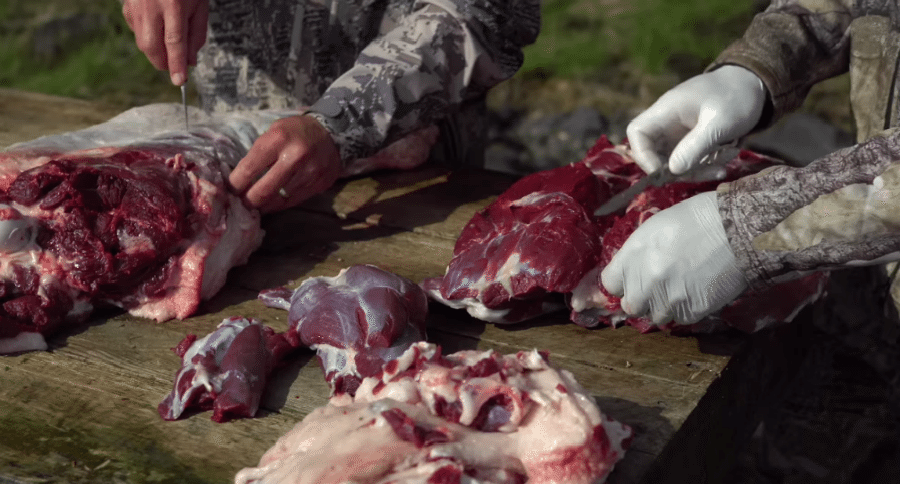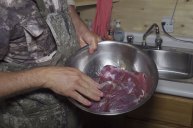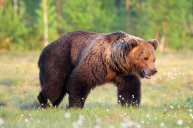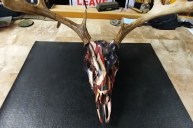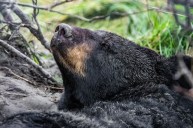The Gritty Bowmen are in the process of skinning and butchering a bear. The conversation touches on hide cuts for mounting and the nuances of trichinosis.
The Gritty Bowmen take a few minutes to talk about how to properly skin a bear for a rug mount versus a standing mount. They also share a couple of laughs about trichinosis, which always seems to be a jovial subject (recall Steve Rinella's account of contracting the malady).
Anthony Spencer relays that basically all you need to do for a rug or standing-on-all-fours mount is split the hide right up the belly of the bear to the base of its chin. Then cut from the middle of the footpad to the elbow on the front legs, before making a horizontal cut right across the chest to connect the two sides. Do the same for the back legs.
The trick is to make sure that your cuts are even as far as how much hide is on either side. "You got to keep in mind that anything you cut you want 50 percent on each side," he says, "so your rug's not uneven. You don't have, you know, 60 percent of your hide on one side and 40 percent on the other."
If you're going to do a standing bear mount you would make a straight cut down the spine side of the hide, since the belly is what would be facing the viewer, and you don't want the seam to show.
They also work on removing as much bear fat as they can from the meat, because the fat doesn't age well when frozen and can give an off taste to the meat.
You can also render the bear fat and use it to make pie crusts and other things, which is a very good idea. That's exactly what the early settlers did with it.
The subject turns to trichinosis, which most or virtually all bears apparently have. Trichinosis can be transferred to humans if the meat that contains it is not cooked or heated to at least 165 degrees for a minimum of 15 seconds.
Brian Call gives a disgustingly and slightly humorous account of how trichinosis is transferred from one critter to another, including humans. "So really, when something eats Brent [their buddy standing next to them], they will get trichinosis," jokes Spencer. "He's loaded."
He's loaded for bear, as they say.
Like what you see here? You can read more great articles by David Smith at his facebook page, Stumpjack Outdoors.
NEXT: This Mountain Lion's Chirping Call May Surprise the Heck Out of You
